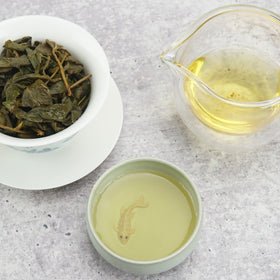Interview with Darjeeling tea's Big Daddy
An interview of Ashok Lohia, the owner of largest number of Darjeeling tea estates, published today in the Economic Times.
The 58-year-old Ashok Lohia took up production of Darjeeling tea in 1988 with two estates — Chamong and Pussimbing. He mastered the trade for 10 years and started acquiring estates in Darjeeling in 1998. Today, he is the largest Darjeeling tea producer with 13 tea estates in his fold. ET’s Sutanuka Ghosal spoke with Lohia on the state of Darjeeling tea industry and the exports.
Excerpts:
The production of Darjeeling tea for years has stayed at 9-10 million kg annually. Is there any way the output can be increased?
The production of Darjeeling tea since the last two years has been declining and the total crop for the year ended March 2010 is around 8.5 million kg. The decline may be attributed largely to adverse weather conditions as well as the normal drop in yields resulting from a sizeable number of estates going organic. The need of the hour is to arrest the decline rather than focus on increasing the production.
Organic Darjeeling tea fetches premium prices in the world market. Do you think more gardens in Darjeeling should adopt this formula for better revenue generation?
The premium on organic teas has reduced over the years and more than 50% of the produce is still selling below the cost of production. The developed economies have become more health-conscious and environment-friendly. So the Darjeeling industry, which is largely dependant on exports to the above regions, have little choice but to convert to organic. However, it should be borne in mind that in organic cultivation the costs are considerably higher and the practices more complex.
How far has the lack of rains affected tea output this year?
For the second year running, the first flush (spring) production has been adversely affected due to the lack of rain and drought conditions. Estates at different elevation and valleys have lost anywhere between 20-30% below normal. The expected Darjeeling production for this fiscal is difficult to forecast now but till date up to 25% down on an average.
It is said that though 10 million kg of Darjeeling tea is produced, nearly 40 million kg of teas are sold in the world market under the Darjeeling tea logo. How can one stop the sales of spurious teas?
It is a known fact that more teas are sold as ‘Darjeeling’ than actually produced. The Tea Board of India has initiated steps almost a decade ago to protect the purity of Darjeeling. Necessary steps are being taken both in India and abroad to ensure this. In India, the ‘GI’ (geographical indication) Act is in force. Similarly, an application seeking similar protection in the EU under EC510 is pending. We hope this would be able to protect the interests of the Darjeeling tea industry.
What sort of prices do first and second flush Darjeeling teas fetch in the world market?
First flush and second flush Darjeeling teas are of very high quality. The supply of this category of teas is lower than the demand and so the prices should be higher than the present levels.
Rains teas constitute nearly 60% of Darjeeling tea production which do not fetch a good price. How does the industry plan to market rains teas?
The monsoon flush with improved infrastructure for processing the green leaf harvested has raised the quality levels substantially and is now finding consumer preference. Once the supply chain system is put into place, the industry would be able to realise the right value for this chunk of produce.
What is the demand for Darjeeling tea in the export markets this year?
The demand for Darjeeling is good this year as global markets are gradually coming out of recession.
What is your expectation regarding price movement in coming months?
Prices till date are lower in rupee terms than previous years due to a weak Europe. With an increase in demand for speciality teas and developed countries coming out of recession, it is expected that prices for Darjeeling tea should move up in coming months.


Leave a comment